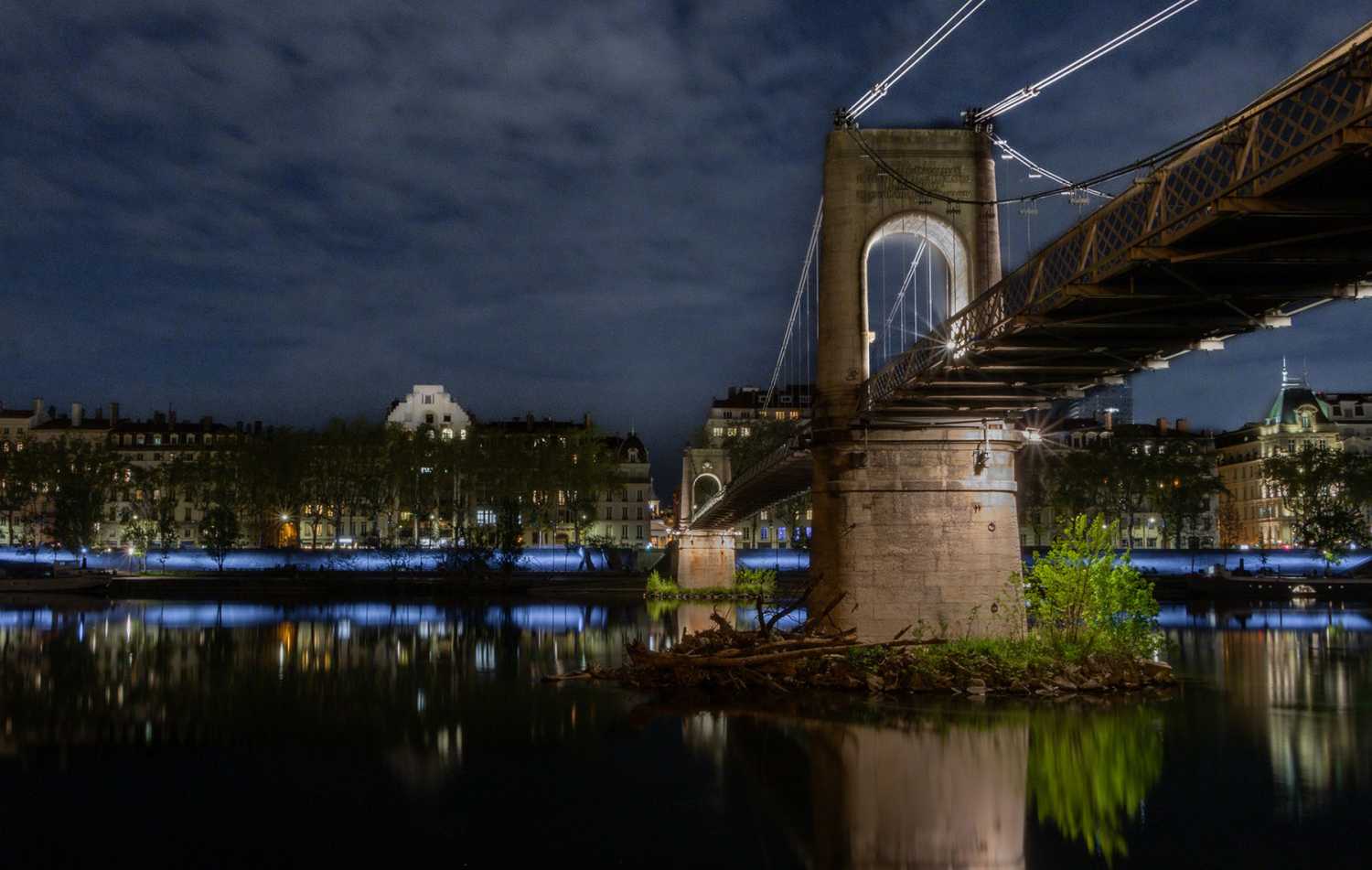Anolis LED lights Lyon riverbank installation
- Details

A major element of this is the ‘glacier blue’ illumination of a 2.5k stretch of the Rhône riverbanks linking the Parc de la Tête d'Or and the Parc de Gerland in greater Lyon, which is now permanently lit with 244 new Anolis ArcSource 24 LED fixtures.
This Anolis lighting scheme has replaced all the original metal halide lighting fixtures that were installed in 2008 when the riverbank scheme was inaugurated and transformed the area from moody car parking to a bustling urban thoroughfare.
The switch to LED was driven by the city’s Urban Lighting Department (DEU) and the new lighting is 76% more energy efficient.
The banks of the Rhône pass through a succession of natural, mineral, and urban developments and are limited to alternative modes of transport, providing a safe, inspirational, and landscaped environment for bicycles, skateboards, e-scooters, pedestrians etc, punctuated by play areas for kids, a skate park, tiered seating for chilling and contemplating in the sun, as well as a grass-covered open-air theatre.
The original concept was to create an atmosphere that sparked the imagination through the reflection and movement of the water onto the stone quay walls whilst also bringing light to the riverbanks.
The very specific blue colour was chosen to represent the river’s glacial origins - high in the Alps of south-central Switzerland - and to suit the hue and texture of the stonework of the re-designed quays along its banks between these two points.
The original lighting scheme was designed by Yves Adrien of Coup d'éclat, and Charles Vicarini of Studio Vicarini. They worked closely with architect Françoise-Hélène Jourda, of Jourda Architects and landscape designers Emmanuel Jalbert and Annie Tardivon of In Situ.
The installation comprised a mixture of metal halide lamps and projected light sources.
Yves Adrien proposed that also utilising projectors would create a 3D effect, so 244 of these were installed, cantilevered off the street light masts along the upper quay using long arms, with two fixtures per mast extending out by 5m, and positioned directly above the stone walls.
After testing and a proposal from interior designer and urban lighting specialist Jérôme Donna, the projectors, complete with adjustable elliptical optics, were aligned so they would softly illuminate the stone surfaces with stunning results.
Fast-forward 14 years, and it was time to increase the sustainability, optimise the energy consumption and enable this fantastic environment to continue flourishing and encouraging people to stroll along and enjoy the ambience. Just using more contemporary and now appropriate technology.
After a lot of testing and comparisons between different products and brands, Anolis was chosen for its power - the light sources are about 25-35m apart - quality of light, robust build, streamlined engineering, superior colour mixing, and for Anolis’ willingness and flexibility to customise the solution so the city of Lyon got exactly what it wanted.
"We needed a compact projector powerful enough to bring some light to the lower sections of the banks,” explained the DEU’s Frédéric Durand. “The colour mixing also had to be properly homogeneous with no streaked edges to the glass or rainbow effects.”
“As a manufacturer, our goal was to address questions of whether this particular blue was within our colour triangle, and if we had enough luminous flux in it to emulate the previous colour effect perfectly," explained Bruno François, Anolis’ architectural specialist.
This same lighting upgrade also saw gobo projectors on all the bridge anchoring walls over the Rhône. They project the names of famous women onto the pathways and banks and occasionally create white and turquoise wave effects.











